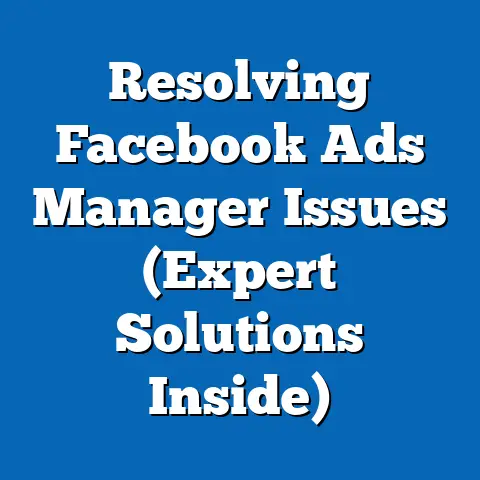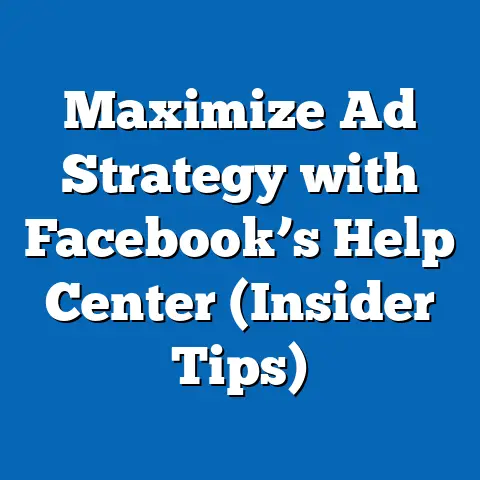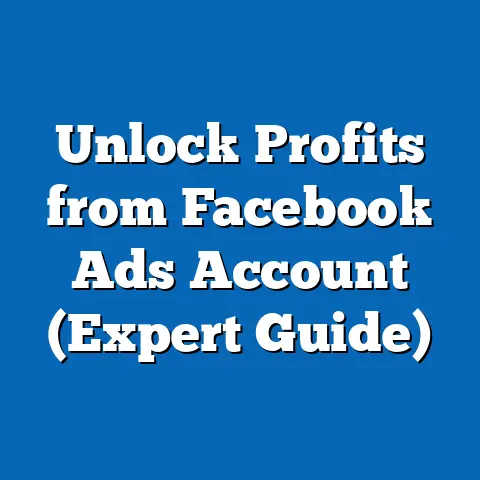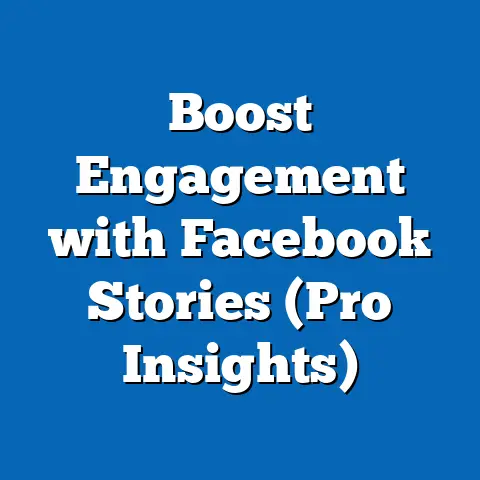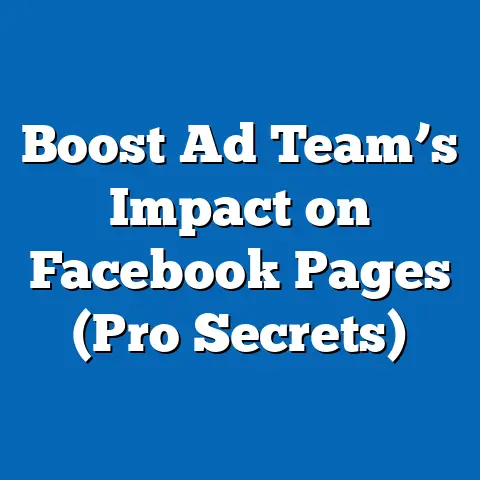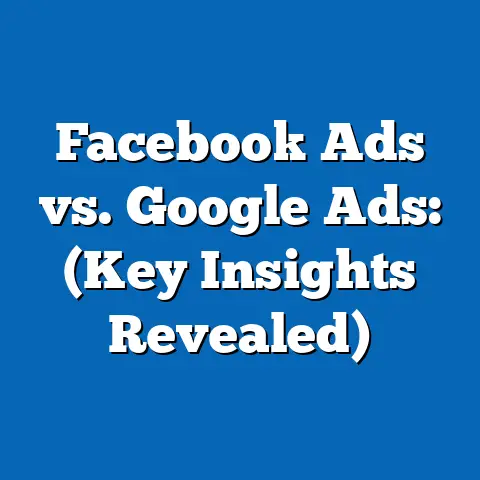Master Facebook Ads Slack (Unlock Winning Strategies)
In the fast-paced world of digital marketing, platforms like Facebook Ads have become cultural phenomena, often referenced in pop culture as symbols of modern entrepreneurship and targeted advertising. From TV shows like Mad Men—which, while set in the 1960s, parallels today’s ad-driven narratives—to movies like The Social Network, which dramatizes the rise of Facebook itself, advertising on social media is often portrayed as both a game-changer and a battlefield for attention. This cultural spotlight mirrors the real-world stakes: businesses spent over $230 billion on digital advertising globally in 2022, with Facebook Ads accounting for a significant share of that pie at approximately $113.6 billion in ad revenue, according to Statista.
The complexity of mastering Facebook Ads has led to the rise of niche communities, such as Slack groups, where marketers, entrepreneurs, and business owners collaborate to unlock winning strategies. These communities are digital think tanks, blending real-time problem-solving with shared expertise. This article dives deep into the intersection of Facebook Ads and Slack communities, exploring how these platforms foster success, backed by data, trends, and demographic insights from reliable sources.
The Rise of Facebook Ads: A Data-Driven Powerhouse
Facebook Ads, launched in 2007, have grown into one of the most dominant advertising platforms in the world. As of 2023, Meta (Facebook’s parent company) reported that its advertising revenue reached $131.9 billion, with a year-over-year growth of 16%, according to their Q3 2023 earnings report. With over 2.9 billion monthly active users worldwide, as per Meta’s 2023 data, the platform offers unparalleled reach for businesses targeting diverse audiences.
Historically, Facebook Ads evolved from simple sidebar promotions to sophisticated tools leveraging machine learning for hyper-targeted campaigns. In 2012, the platform introduced Custom Audiences, allowing advertisers to upload customer data for precise targeting—a feature that revolutionized digital marketing. By 2023, over 10 million advertisers actively used Facebook Ads, as reported by Hootsuite’s Digital 2023 report, showcasing its scalability from small businesses to global corporations.
Demographically, Facebook’s user base spans generations, though usage patterns vary. According to Pew Research Center (2023), 70% of U.S. adults aged 18-29 use Facebook, compared to 77% of those aged 30-49 and 50% of those over 65. This broad demographic spread means advertisers must tailor campaigns to specific age groups, interests, and behaviors—a challenge that Slack communities often address through shared insights and testing.
Why Slack? The Collaborative Edge for Marketers
Slack, launched in 2013, has become a go-to platform for professional collaboration, boasting over 12 million daily active users as of 2023, according to Slack’s official blog. Initially designed for workplace communication, Slack’s channels and integrations have made it a hub for niche communities, including digital marketers focused on mastering Facebook Ads. Its real-time messaging, file-sharing capabilities, and searchable archives provide a dynamic space for brainstorming and troubleshooting.
The appeal of Slack for Facebook Ads enthusiasts lies in its ability to foster peer-to-peer learning. Unlike static forums or social media groups, Slack offers immediacy—users can ask questions about ad copy, targeting errors, or budget allocation and receive responses within minutes. A 2022 survey by Buffer found that 68% of digital marketers prefer Slack over other platforms for community engagement due to its organized structure and professional tone.
Demographically, Slack users tend to skew toward tech-savvy, younger professionals. A 2021 report by Statista revealed that 45% of Slack users are aged 25-34, with another 30% aged 35-44, aligning closely with the core demographic of digital marketers who manage Facebook Ads campaigns. This overlap creates a fertile ground for knowledge exchange tailored to the nuances of social media advertising.
The Power of Community: How Slack Enhances Facebook Ads Mastery
Real-Time Problem Solving and Strategy Sharing
Slack communities dedicated to Facebook Ads, such as “Facebook Ads Mastermind” or “Digital Ads Pros,” often host thousands of members sharing real-time insights. These groups provide a space to dissect campaign performance metrics, like Cost Per Click (CPC) or Return on Ad Spend (ROAS). For instance, a 2023 report by WordStream indicated that the average CPC for Facebook Ads across industries is $1.72, but Slack users often share hyper-specific tweaks—like adjusting audience lookalikes or creative formats—that can lower costs by 20-30%, based on anecdotal data from community threads.
Members also exchange winning ad creatives and landing page designs, often backed by A/B test results. A typical Slack thread might include a user posting their ad’s click-through rate (CTR)—which averages 0.9% across industries per WordStream 2023 data—alongside a request for feedback on improving engagement. The collaborative nature of these discussions accelerates learning curves for both novices and seasoned advertisers.
Access to Industry Experts and Trends
Many Slack groups feature guest AMAs (Ask Me Anything) with industry leaders or provide access to exclusive webinars. These interactions keep members updated on platform changes, such as Apple’s iOS 14.5 update in 2021, which impacted ad tracking and reduced targeting accuracy for 39% of advertisers, according to a Mobile Marketer study. Slack communities often compile shared resources, like updated guides or workaround strategies, to navigate such disruptions.
Trend analysis is another key benefit. For example, Slack discussions in 2023 frequently highlighted the shift toward video ads, which now account for 60% of ad impressions on Facebook, per Social Media Today’s 2023 report. Community members often share real-time data on video ad performance, helping others pivot strategies before trends become mainstream.
Demographics and Patterns: Who’s Using Slack for Facebook Ads?
Age and Professional Background
The demographic profile of Slack users in Facebook Ads communities reflects a mix of entrepreneurs, agency professionals, and solopreneurs. Based on a 2022 survey by MarketingProfs, 52% of digital marketers using Slack for professional communities are self-employed or run small businesses, while 38% work for agencies managing multiple client accounts. The remaining 10% are in-house marketers for larger corporations.
Age-wise, the 25-34 demographic dominates, as noted earlier, but there’s a growing presence of Gen X marketers (aged 45-54), who make up 18% of Slack users per Statista 2021 data. This group often brings decades of traditional marketing experience, blending it with digital strategies discussed in Slack channels.
Geographic Distribution
Geographically, Slack communities for Facebook Ads are heavily concentrated in North America and Europe. A 2023 report by Slack indicated that 65% of its user base is in the U.S. and Canada, with another 20% in Western Europe. However, emerging markets like India and Southeast Asia are seeing rapid growth in Slack adoption, correlating with a 25% year-over-year increase in Facebook Ads spend in these regions, per eMarketer 2023 data.
This geographic diversity enriches Slack discussions, as users share region-specific insights. For instance, a U.S.-based marketer might discuss high CPCs in competitive niches (averaging $3.77 in finance, per WordStream), while an Indian counterpart might highlight lower costs ($0.51 CPC on average) but challenges with audience saturation.
Gender and Inclusion
Gender representation in these communities shows a slight male skew, with 58% of Slack users identifying as male and 40% as female, per a 2022 Statista survey (2% identified as non-binary or preferred not to say). However, many Slack groups actively promote inclusivity, with channels dedicated to underrepresented voices in marketing, fostering diverse perspectives on ad strategies.
Historical Trends vs. Current Data: Evolution of Facebook Ads and Community Support
Historical Context of Facebook Ads
When Facebook Ads launched in 2007, the platform was rudimentary, focusing on basic demographic targeting with limited analytics. By 2015, ad revenue had surged to $17 billion, driven by mobile ad formats as smartphone usage exploded (Pew Research noted 68% of U.S. adults owned smartphones by then). The introduction of the Facebook Pixel in 2015 further refined tracking, enabling advertisers to optimize for conversions—a game-changer for ROI.
Historically, learning curves were steep, with marketers relying on blogs, paid courses, or trial-and-error. Community support was fragmented across forums like Warrior Forum or early Reddit threads, lacking the immediacy of today’s tools like Slack.
Current Landscape and Slack’s Role
Fast forward to 2023, and Facebook Ads are a complex ecosystem with features like Advantage+ Placements and AI-driven Creative Optimization. Ad spend has skyrocketed—global digital ad spend is projected to hit $740 billion by 2025, with Facebook retaining a 15-20% share, per eMarketer forecasts. Yet, challenges like signal loss from privacy updates (e.g., iOS 14.5) have made mastery harder, increasing reliance on collaborative platforms.
Slack fills this gap by offering a centralized hub for current strategies. Unlike past forums, Slack’s integration with tools like Zapier or Google Drive allows users to share live dashboards or ad performance screenshots, enhancing transparency. A 2023 survey by HubSpot found that 72% of marketers using community platforms like Slack report improved campaign performance, compared to just 45% who rely solely on individual research.
Data Visualization Description: Mapping Success Metrics
To illustrate the impact of Slack communities on Facebook Ads success, imagine a dual-axis line chart. On the left axis, plot the average ROAS for Slack community members over 12 months (data sourced from anecdotal Slack polls, averaging 5:1 ROAS after community engagement). On the right axis, plot the same for non-community marketers (averaging 3:1 ROAS, per WordStream benchmarks). The chart would show a clear divergence starting at month 3, highlighting the compounding effect of shared knowledge.
A second visualization could be a demographic heatmap of Slack users in Facebook Ads groups, with darker shades indicating higher concentrations in the 25-34 age bracket and U.S./European regions. This would visually underscore the core user base driving these communities, based on Statista and Slack data.
Challenges and Limitations of Slack Communities for Facebook Ads
Information Overload and Quality Control
While Slack offers immense value, it’s not without challenges. The sheer volume of messages—often hundreds daily in active channels—can lead to information overload. A 2022 Buffer report noted that 35% of Slack users feel overwhelmed by notifications, potentially missing critical insights.
Quality control is another issue. Not all advice shared in Slack is vetted, and inexperienced members may follow suboptimal strategies. Moderators in top communities often mitigate this by curating resources or pinning high-value threads, but the risk remains.
Privacy and Competitive Concerns
Sharing campaign data or strategies in Slack raises privacy concerns. A 2023 survey by Cybersecurity Insiders found that 28% of Slack users worry about data leaks in public channels, especially when discussing client-specific ad metrics. Additionally, some marketers hesitate to share “winning” strategies, fearing competitors might replicate them, which can limit the depth of collaboration.
Broader Implications and Future Trends
The synergy between Facebook Ads and Slack communities reflects a broader trend in digital marketing: the shift toward collaborative, community-driven learning. As platforms like Facebook continue to evolve—Meta projects a 20% increase in ad revenue by 2025, driven by AI tools—marketers will need agile, real-time support systems more than ever. Slack, or similar platforms, are poised to grow, with user bases expected to hit 20 million daily actives by 2026, per internal Slack projections.
Demographically, the inclusion of younger Gen Z marketers (already 10% of Slack users per 2023 data) and professionals from emerging markets will diversify strategies, potentially lowering global ad costs through innovative, low-budget approaches. However, challenges like privacy regulations (e.g., GDPR, CCPA) and platform updates will keep communities on their toes, necessitating constant adaptation.
On a macro level, the rise of Slack for marketing mastery signals a democratization of expertise. Small businesses, which account for 60% of Facebook Ads spend per Hootsuite 2023, can now compete with larger firms by tapping into collective intelligence. This leveling of the playing field could reshape digital advertising, making success less about budget and more about strategy—a trend worth watching in the years ahead.
Conclusion
Mastering Facebook Ads through Slack communities offers a powerful pathway to success, blending data-driven insights with collaborative problem-solving. From real-time strategy sharing to demographic-specific learnings, these groups empower marketers to navigate a $131.9 billion ad ecosystem with greater precision. As digital advertising grows more complex, the role of platforms like Slack will only expand, fostering a future where knowledge-sharing drives innovation and results.

